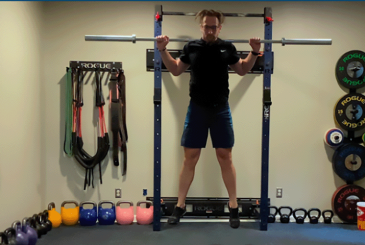The third article in this series sees Sam Boylett-Long discuss how to transition into strength training, what it should incorporate, and how it’ll benefit your rowers
For this article, I’ll be specific to improving the maximum force an athlete is able to apply rather than other facets of strength training e.g. strength endurance or muscular endurance.
Briefly mentioned in the maximising your potential article, but to highlight its importance, strength training can improve bone mineral density (BMD), neuromuscular function, proprioception, injury risk, rowing economy, distance per stroke, rate of force development and a whole host of other factors affecting rowing performance.
We often see increases in muscle mass during phases of strength training in young athletes or those with a low training age. Whilst this is due to a lower stimulus required for an adaptation, it’s important to note that we can also see increases in body mass during strength training in high level athletes. This is due to some of the physiological mechanisms underpinning strength changes, but most of the adaptations we see initially are neurological changes.
Increases in body mass can be attributed to increases in BMD and tendinous structures but changes in muscle mass specifically can be linked to calorie intake, genetic predisposition and the structure of the program itself. It is important to understand that you can increase force output of a muscle or muscle group without increasing body mass or muscle mass specifically.
The reason I bring up the topic is for those competing within restricted categories (lightweights, coxes etc.) or athletes not wishing to increase mass generally. As always, find time to reassess your progress, understanding how your body is responding to a given stimulus throughout each training block and adjusting accordingly.
If you want to increase strength or force output whilst minimising the potential of muscle mass changes I’d advocate using lower rep ranges at a higher percentage of one rep max (1RM) to stimulate neural changes rather than musculature changes. Coinciding with this needs to be a consideration to nutrition, focusing on a protein rich diet, re-assessing body mass and composition throughout each training block.
Example session for strength development minimising increases in muscle mass:
Here we’re looking to stimulate changes in the nervous system, specifically motor unit recruitment, rate of force development, rate coding and neural drive which will improve the top end force we are able to apply in the movements seen in the exercises on the programme example.

This is a mixed session example in terms of upper and lower body, however you can structure this many ways throughout the week depending on the number of sessions you are able to complete each cycle. If you are only able to lift twice, I’d suggest a whole-body session Tuesday and Friday so you’re getting a good dose of strength development throughout the week. If you can programme three sessions a week, you have quite a few options; I’d suggest a lower body focused session Monday, upper body biased Wednesday and a combined lower and upper body or mixed session Saturday.
If you’re planning on programming four or more sessions per week, the options in terms of weekly structure are vast, so I would stick to a structure for ~four weeks and as always, re-evaluate based on your progress.
If there isn’t that much of a concern with muscle mass changes then this increases the flexibility of the programme. Specifically in terms of increasing rep/volume ranges or trialling a combination of approaches within the programme. As mentioned in the previous instalment of this series, muscle size or the cross-sectional area of a muscle, is strongly linked with muscle strength. It can be easier to increase strength if there has been a foundation of hypertrophy as you’ve increased the size and strength capacity of the muscle, hence why mesocycles focused on strength training follow muscle hypertrophy blocks.
In this second example, I wanted to highlight the way we can manipulate the rep ranges and the intensity of the external loads to increase maximal force, even working at submaximal intensities.

For example, if an athlete completes more reps at a lower load than they were previously able to, it could indicate that their maximal force capabilities have moved on. Therefore we might complete three sets of work @ 75% on the Bench Press and use a fourth set as a benchmark within training to see how many reps an athlete can complete at a lower or submaximal intensity to assess strength changes.
Typically, testing a 1RM can be very costly both in terms of time and energy, so I would encourage the use of reps in reserve. For example, using the below table, if I complete a set of six reps of bench press and think I could have completed four more reps, I will have likely been working around 75% of my 1RM. It’s important to note this table isn’t perfect and will require adjusting based on the exercise you are completing but it provides a ballpark assessment of what intensity you are working at!

When in the season and why
This will completely depend on how you plan to structure your macrocycle based on your training age and goals. As previously mentioned, improving strength can be very taxing, specifically, the neuromuscular fatigue, time and energy required to see improvement. I would suggest starting some basic strength work as soon as possible within the season. If you’re following a hypertrophy block, a strength block would sit between October and January/February.

Next article: Resistance Training Series #4: Training for power










